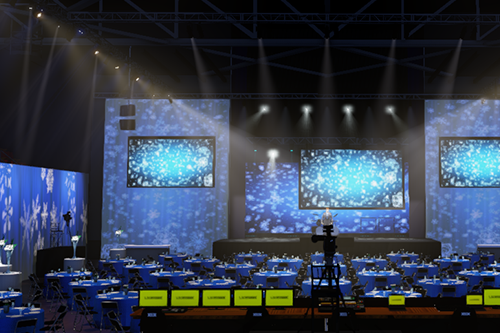Choosing the Ideal Dot Pitch for Maximum LED Wall Efficiency
Choosing the Ideal Dot Pitch for Maximum LED Wall Efficiency
Blog Article

As it comes to LED walls, a key important factors to consider is dot pitch. Dot pitch refers to the distance between the centers of two adjacent pixels on an light-emitting diode display. This measurement is commonly expressed in mm. Understanding pixel pitch is crucial because it directly influences the clarity and sharpness of the images displayed. A reduced pixel pitch indicates that the pixels are closer together, resulting to a higher resolution, while a bigger pixel pitch results in a lower resolution. Therefore, selecting the appropriate pixel pitch is vital for obtaining optimal LED wall performance.
The selection of pixel pitch frequently depends on the sight distance. For instance, if the LED wall is meant to be viewed from a further away, a bigger pixel pitch may be appropriate. This is due to the fact that the human eye cannot easily distinguish individual pixels when they are more distant away. On the contrary hand, if the wall will be viewed up close, a smaller pixel pitch is needed. In situations such as inside events, where viewers are typically closer to the screen, a smaller pixel pitch will offer a crisper and more distinct image. Therefore, understanding how viewing distance affects pixel pitch is critical to making an informed decision.
Another important consideration is the intended use of the light-emitting diode wall. Various applications, such as advertising, concerts, or conference presentations, may necessitate varied pixel pitches. For instance, an LED wall used for advertising in a shopping center may gain from a pixel pitch that facilitates lively colors and high detail so that it captures the focus of bystander shoppers. Conversely, an outdoor LED wall used at a concert may prioritize brightness and visibility rather than resolution, permitting for a bigger pixel pitch. Therefore, the particular context in which an light-emitting diode wall will be utilized is vital for determining the appropriate pixel pitch.
Pricing is also a major factor when selecting pixel pitch. Typically, LED displays with reduced pixel pitches tend to be more expensive due to the increased density of pixels and the sophisticated technology required for production. While it may be tempting to choose a high-resolution display with a small pixel pitch, budget constraints frequently require a balance between quality and cost. Businesses should assess their needs and determine how much they are willing to invest in an light-emitting diode wall, ensuring that the pixel pitch matches with their budgetary capabilities while still meeting functional expectations.
Ultimately, it is essential to consider the maintenance and durability of the LED wall when selecting pixel pitch. Displays with reduced pixel pitches can sometimes be more delicate and may require more meticulous handling and maintenance. Regular maintenance is required to ensure that the display functions effectively over time. Understanding the maintenance requirements and potential issues associated with different pixel pitches can important site assist organizations make a more knowledgeable decision. By taking into account all these elements, including viewing distance, planned use, budget, and maintenance, individuals can choose the perfect pixel pitch for peak LED wall performance.